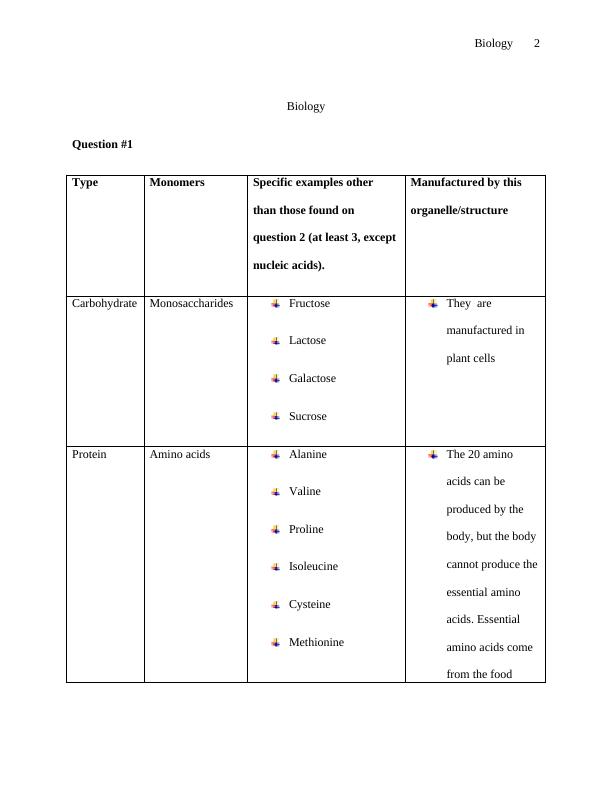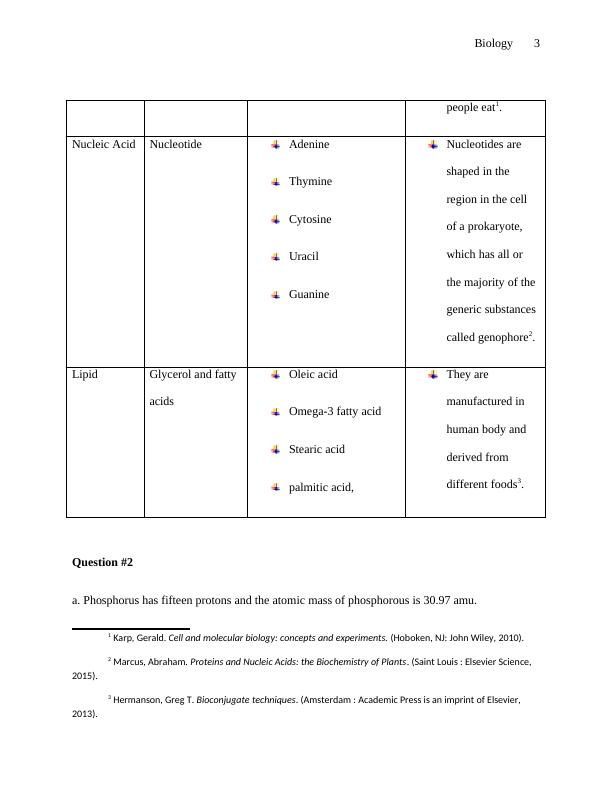Biology Study Material
Fill in tables of organic molecules, describe phosphorus, describe substances in a table, and explain how water cools the body while sweating.
9 Pages872 Words56 Views
Added on 2023-03-30
About This Document
This biology study material provides information on various topics including monomers, carbohydrates, proteins, nucleic acids, lipids, and their functions in the body. It also discusses the role of water in cooling the body through sweat evaporation. Access solved assignments, essays, and dissertations on biology.
Biology Study Material
Fill in tables of organic molecules, describe phosphorus, describe substances in a table, and explain how water cools the body while sweating.
Added on 2023-03-30
ShareRelated Documents
End of preview
Want to access all the pages? Upload your documents or become a member.



